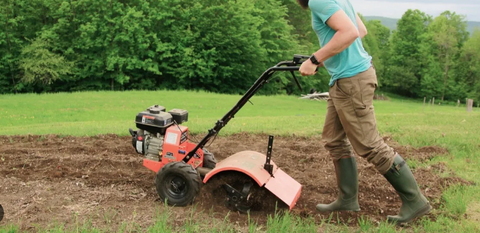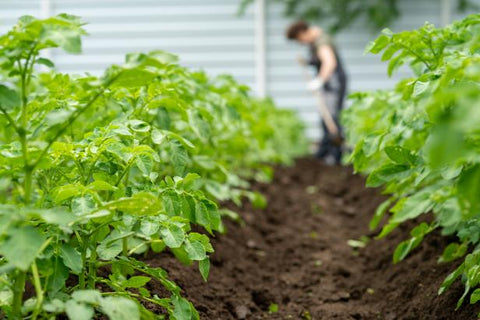Houseplants bring a breath of fresh air into our homes, enhancing our living spaces with greenery and adding a touch of nature. However, as much as we love our indoor plants, keeping them alive and thriving can sometimes feel like an uphill battle. Many houseplant owners unintentionally make mistakes that lead to the untimely demise of their plants. Understanding these common pitfalls is the first step toward avoiding them and ensuring that your houseplants live long, healthy lives.
In this article, we’ll explore the seven most common ways people kill their houseplants, along with practical advice on how to avoid these mistakes.

Overwatering: Drowning Your Plants
One of the quickest ways to kill a houseplant is by overwatering. Many plant owners, in their efforts to keep their plants well-hydrated, tend to give them too much water. Unfortunately, this can lead to waterlogged soil, root rot, and eventually plant death.
Why Overwatering Is Harmful
Plants need water to survive, but too much water can suffocate their roots. When soil becomes waterlogged, it lacks oxygen, which is essential for root health. Without adequate oxygen, the roots begin to rot, and the plant can no longer absorb the nutrients it needs to survive.
Signs of Overwatering
- Yellowing leaves
- Wilting, despite the soil being wet
- Mold or fungus on the soil surface
- Soggy, foul-smelling soil
How to Avoid Overwatering
- Check the soil before watering: Stick your finger about an inch into the soil to check moisture levels. If the soil seems dry, it is time to water. If it is still damp, wait a few days before checking again.
- Choose pots with drainage holes: Ensure your plant pots have drainage holes at the bottom to allow excess water to escape. Use a saucer under the pot to catch any water that drains out.
- Use the right soil mix: Opt for a well-draining potting mix to prevent water from sitting around the roots.
Underwatering: Starving Your Plants of Moisture
On the opposite end of the spectrum is underwatering, another common way to kill houseplants. While it’s important not to overwater, some plant owners become overly cautious and end up giving their plants too little water.
Why Underwatering Is Harmful
When plants don’t receive enough water, they can’t carry out essential functions like photosynthesis and nutrient absorption. Over time, a lack of moisture causes the plant’s leaves to dry out, turn brown, and fall off. Prolonged underwatering can kill the plant entirely.
Signs of Underwatering
- Dry, crispy, or brown leaf edges
- Leaves curling or wilting
- Stunted growth
- Dry, cracked soil pulling away from the sides of the pot
How to Avoid Underwatering
- Establish a watering schedule: Different plants have different watering needs, but as a general rule, most houseplants need to be watered once a week. Monitor your plants closely and adjust the frequency based on how quickly the soil dries out.
- Use the finger test: Just as with overwatering, check the soil moisture by sticking your finger into the soil. If it seems dry to the touch, it's time to water.
- Soak thoroughly: When watering, make sure to water deeply so that it reaches the plant’s roots. Water until it drains from the bottom of the pot.

Inadequate Light: Leaving Your Plants in the Dark
Light is one of the most critical factors in a plant’s growth and survival. Without adequate light, houseplants cannot photosynthesize, the process by which they produce the energy they need to grow and thrive. While some plants can tolerate lower light conditions, most houseplants require a moderate to bright light source.
Why Inadequate Light Is Harmful
Plants that don’t receive enough light will start to stretch in search of sunlight, leading to weak, leggy growth. They may also stop producing new leaves, and their existing leaves may yellow or drop off. In extreme cases, a lack of light can cause the plant to stop growing altogether and eventually die.
Signs of Inadequate Light
- Leggy, stretched-out growth
- Yellowing or pale leaves
- Slow or stunted growth
- No new leaves or flowers
- Leaves leaning or bending toward the light
How to Provide Adequate Light
- Know your plant’s light needs: Research the specific light requirements of your houseplants. Some plants, like succulents and cacti, thrive in bright, direct sunlight, while others, like ferns and pothos, prefer indirect or low light.
- Place plants near windows: If possible, place your plants near a window where they can receive natural light. Southand east-facing windows tend to provide the best light for most plants.
- Use artificial grow lights: If your home doesn’t get enough natural light, invest in grow lights designed for indoor plants. LED grow lights are energy-efficient and can offer the entire spectrum of light that plants require.
Too Much Sun: Scorching Your Plants
While some houseplants love bright light, exposing them to too much direct sunlight can be just as harmful as not providing enough. Plants that are exposed to intense sunlight for prolonged periods, especially in hot climates, can suffer from sunburn, leaf scorching, and dehydration.
Why Too Much Sun Is Harmful
Excessive exposure to sunlight can cause a plant’s leaves to dry out and become scorched. This not only damages the plant’s appearance but also reduces its ability to photosynthesize. Over time, too much sun can lead to dehydration and death.
Signs of Too Much Sun
- Brown or crispy leaf edges
- Scorched, bleached, or burned patches on leaves
- Leaves curling or wilting in the afternoon
- Rapid leaf drop
How to Protect Plants from Too Much Sun
- Move plants to a shaded location: If your plant’s leaves are showing signs of sunburn, move it to a location where it will receive indirect light, especially during the hottest part of the day.
- Use sheer curtains or blinds: If your plants are near a window that receives intense sunlight, use sheer curtains or blinds to diffuse the light.
- Rotate plants: Regularly rotate your plants so that all sides receive an even amount of light, which can help prevent overexposure.

Using the Wrong Soil: Starving Plants of Nutrients
Not all soil is created equal, and using the wrong type of soil can deprive your houseplants of the nutrients they need to grow. Different plants have different soil requirements, and using the wrong soil mix can lead to poor drainage, nutrient deficiencies, and root damage.
Why the Wrong Soil Is Harmful
Using soil that doesn’t provide proper drainage or nutrients can cause a range of problems. For example, cacti and succulents need well-draining soil to prevent root rot, while tropical plants like ferns need moisture-retentive soil to stay hydrated. A mismatch between the plant and its soil can prevent it from thriving.
Signs of Poor Soil
- Slow or stunted growth
- Yellowing leaves (nutrient deficiency)
- Water pooling on the surface of the soil
- Fungal growth or mold on the soil
How to Choose the Right Soil
- Use a plant-specific potting mix: Many houseplants benefit from specialized potting mixes. For example, succulents and cacti require a well-draining soil mix with sand or perlite, while tropical plants may need a peat-based mix that retains moisture.
- Refresh the soil periodically: Over time, potting soil can lose its nutrients, so it’s a good idea to repot your plants with fresh soil every year or two.
- Add compost or organic matter: For an extra nutrient boost, consider mixing compost or organic matter into your potting soil.
Neglecting to Repot: Cramping Your Plant’s Growth
Houseplants need room to grow, and over time, their roots can outgrow their pots. When a plant becomes root-bound, its roots will wrap tightly around the inside of the pot, leaving little room for soil or water. This can severely restrict the plant’s growth and lead to poor health.
Why Not Repotting Is Harmful
When a plant becomes root-bound, it can’t access the water and nutrients it needs to thrive. Over time, the plant may become stressed and its growth will slow. Eventually, the plant may stop growing altogether and start to decline.
Signs Your Plant Needs Repotting
- Roots growing out of the drainage holes
- Stunted growth or no new growth
- Soil dries out very quickly after watering
- The plant is top-heavy or outgrows its current pot
How to Repot a Houseplant
- Choose a slightly larger pot: When repotting, select a pot that is 1-2 inches larger in diameter than the current one. Too large of a pot can cause the plant to sit in excess soil, leading to overwatering.
- Refresh the soil: Use fresh, high-quality potting soil when repotting. This will provide your plant with new nutrients and better drainage.
- Be gentle with the roots: Loosen the plant’s roots gently before placing it in its new pot to encourage healthy growth.

Ignoring Pests and Diseases: Letting Infestations Take Over
Pests and diseases can wreak havoc on houseplants if not addressed quickly. Common houseplant pests like spider mites, aphids, and mealybugs can damage your plant’s leaves, stems, and roots, leading to weakened growth or death. Fungal infections and bacterial diseases can also spread rapidly if left untreated.
Why Pests and Diseases Are Harmful
Pests feed on your plant’s tissues, sucking out sap and nutrients that the plant needs to survive. Infected plants are more vulnerable to diseases, and if not treated, the infestation can spread to other plants in your home.
Signs of Pest Infestations or Disease
- Sticky residue on leaves (honeydew)
- Tiny webs or white powder on leaves
- Discolored or distorted leaves
- Visible insects, larvae, or eggs on the plant
How to Prevent and Treat Pests and Diseases
- Inspect new plants: Always inspect new plants for pests before bringing them into your home, as they can carry infestations from the nursery.
- Isolate all infested plants: If you notice a pest problem, isolate the affected plant to prevent the infestation from spreading to others.
- Use organic treatments: Use insecticidal soap, neem oil, or rubbing alcohol to treat pests. For fungal or bacterial infections, remove affected leaves and treat the plant with a fungicide.
Houseplants bring life, beauty, and freshness into your home, but keeping them alive requires proper care and attention. By avoiding these seven common mistakes—overwatering, underwatering, inadequate light, too much sun, using the wrong soil, neglecting repotting, and ignoring pests—you can ensure your houseplants thrive.
Understanding the specific needs of your plants, from watering schedules to light levels and soil types, is key to keeping them healthy. With a little care and knowledge, you can avoid the pitfalls that lead to plant death and enjoy the benefits of a vibrant, green home garden all year long.









